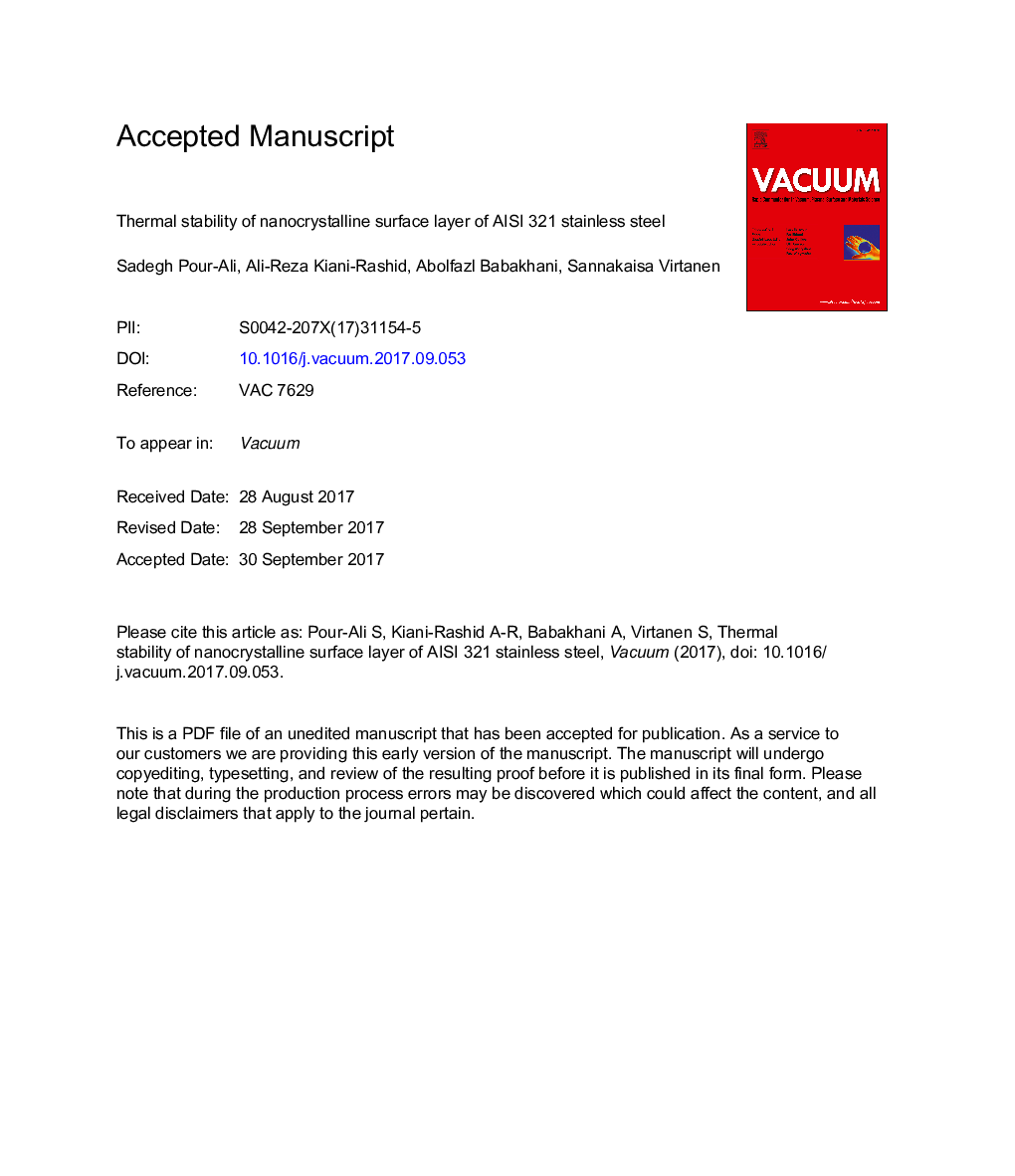| Article ID | Journal | Published Year | Pages | File Type |
|---|---|---|---|---|
| 5467998 | Vacuum | 2017 | 27 Pages |
Abstract
A nanocrystalline layer with an average grain size of 75 nm was formed on the top surface layer of 321 stainless steel (321SS) alloy via severe shot peening (SSP). Grazing incidence X-ray diffraction (GI-XRD) and transmission electron microscopy (TEM) were applied to characterize the grain size changes, phase compositions and microstructure evolution after vacuum annealing at temperatures ranging from 200 °C to 1000 °C. The results revealed that nanograins slowly grow to â411 nm as the temperature increases to 600 °C. Dislocation annihilation is shown to be responsible for the changes in grain size up to 600 °C. However, an abnormal grain growth is observed at annealing temperatures of 800 °C and 1000 °C in which grains grow to â1267 nm and â2012 nm, respectively. This abnormal grain growth is attributed to the synergistic effect of dislocation annihilation in grain boundaries and triple points, re-arrangement of dislocations, and formation of middle angle (13°-17°) grain boundaries. Transformation of stress induced martensite (αâ²) to austenite (γ) and microhardness evolution in the nanocrystalline top surface layer during annealing are also discussed.
Related Topics
Physical Sciences and Engineering
Materials Science
Surfaces, Coatings and Films
Authors
Sadegh Pour-Ali, Ali-Reza Kiani-Rashid, Abolfazl Babakhani, Sannakaisa Virtanen,
